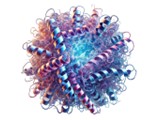Expression of Difficult Proteins: Challenges and Solutions

Many proteins are notoriously difficult to express in heterologous systems due to a wide range of contributing factors.
Many proteins are notoriously difficult to express in heterologous systems due to a wide range of contributing factors. A common issue arises when a foreign host struggles to properly fold a protein it does not naturally produce. For instance, expressing a protein from a higher eukaryote in a bacterial system can be particularly challenging because of significant differences in factors such as codon usage, translation rates, and redox conditions. Additionally, the intrinsic properties of the target protein can pose challenges for the host. For example, proteins with multiple membrane-spanning domains may fail to integrate correctly into the host’s membrane bilayers, or the protein may not be expressed in a soluble form. Furthermore, many proteins require post-translational modifications, such as glycosylation or phosphorylation, which may be absent or vary significantly across expression hosts.
There is no universal solution for expressing all classes of difficult proteins. Instead, specific strategies tailored to the expression challenges can improve the likelihood of success. In microbial expression systems, this often involves using genetically engineered host strains designed to enhance the production of certain challenging protein classes. Other approaches focus on optimizing aspects of the protein production process. For instance, some expression hosts allow for precise regulation of target gene expression, while specific protein tags can facilitate the proper insertion of a protein into the host membrane or improve its solubility.
Expression of Difficult Proteins includes these areas of focus:
- Disulfide-bonded Protein Expression
- Membrane Protein Expression
- Toxic Protein Expression
- Target Protein Insolubility
Challenges in Recombinant Protein Expression
High-quality recombinant proteins are essential starting materials for successful research endeavors and drug development programs. Key quality attributes of recombinant proteins include purity, oligomeric state, thermal and chemical stability, proper folding, post-translational modifications (PTMs), and biological activity. However, the inherent complexity of proteins often makes their expression and purification challenging. Certain sequence or structural features, such as transmembrane domains or GPI-anchor sequences, can significantly impact the yield and stability of recombinant proteins. For example, proteins with transmembrane domains tend to associate with the plasma membrane, leading to reduced yields. Additionally, the hydrophobic nature of transmembrane regions can compromise protein stability, necessitating the use of detergents or lipid-based stabilization agents during purification and formulation. Overexpression of target proteins can also lead to unintended physiological changes in host cells, resulting in misfolded proteins or degradation by host proteases.
Proteins are inherently delicate molecules, susceptible to environmental stresses throughout the expression and purification processes. As a result, recombinant protein production requires meticulous planning and optimization of key factors, including the choice of host system, culture conditions, expression duration, and purification strategies, to achieve high yields while maintaining the integrity of critical quality attributes.
Moreover, advancements in high-throughput antibody and protein screening platforms, particularly display-based techniques, have enabled the routine generation of large libraries of antibody and therapeutic protein candidates. To validate the functionality and efficacy of these lead candidates, recombinant forms must be produced. This necessitates the development of robust, versatile, high-throughput protein expression platforms to support lead discovery efforts. However, this growing demand introduces new challenges in the field of recombinant protein expression, highlighting the need for innovative approaches to streamline these processes.
Solutions: Approaches to Optimization
Developing a reliable procedure to express high-quality target proteins often requires systematic optimization. There is no universal "one-size-fits-all" solution, so the expression and purification process must be carefully tailored for each protein.
Below, we illustrate the optimization of key components in the recombinant protein expression workflow.
Suitable Hosts
The choice of host cells determines the folding and post-translational modification (PTM) patterns of the recombinant protein, and must be carefully considered based on the desired protein attributes.
Vectors and Culture Conditions
Vectors serve as vehicles for delivering target genes into host cells. They typically include essential components such as a multiple cloning site (MCS) for the gene of interest, a promoter to drive expression, and antibiotic resistance genes for selection. Many commercial vectors are pre-optimized for high transfection and expression efficiency.
In addition to vector optimization, culture conditions—such as duration and temperature—should be fine-tuned to preserve the integrity of the target protein. Additives can also improve yields. For example, incorporating metal ions and cofactors has been shown to stabilize enzymes during expression and enhance their activity.
Protein Constructs
Certain structural features of target proteins can destabilize recombinant expression. Regions with high hydrophobicity, intrinsic disorder, or repetitive amino acid motifs are common culprits. When these regions are not essential for protein function, their removal can significantly enhance protein stability and expression levels.
Purification Procedures
Proteins are highly sensitive to their chemical environment. Factors such as pH, ionic strength, and oxidative conditions can affect stability and should guide the development of purification and storage buffers. Additives may also be required to stabilize proteins or enhance the exposure of affinity tags during purification. Adjusting the detergent formula improved protein extraction, and a different detergent (DDM) was used during the final polishing step to stabilize the purified protein product.
CliniSciences expertise spans the expression of various protein types—including enzymes, antibodies, membrane proteins, cytokines, and other challenging proteins—across different cell systems like bacteria, yeast, mammalian cells, and acellular systems, ensuring successful production for projects involving therapeutics, diagnostic tools, or research materials:
- Vector Options: Utilize either a vector you supply or one that we design and produce, ensuring optimal expression in the chosen system for reliable results.
- Scalable Production: From small to large scale, our platform adapts to your project needs, providing flexibility and efficiency at every production stage.
- Parallel Testing: Our multi-system platform enables simultaneous testing across different systems, allowing us to identify the best expression conditions for your protein quickly.
- Optimization: Extend production conditions within a single system to refine and determine the best yield and functionality, ensuring the highest quality output.
Contact our technical support team to explore how we can produce your difficult proteins.

